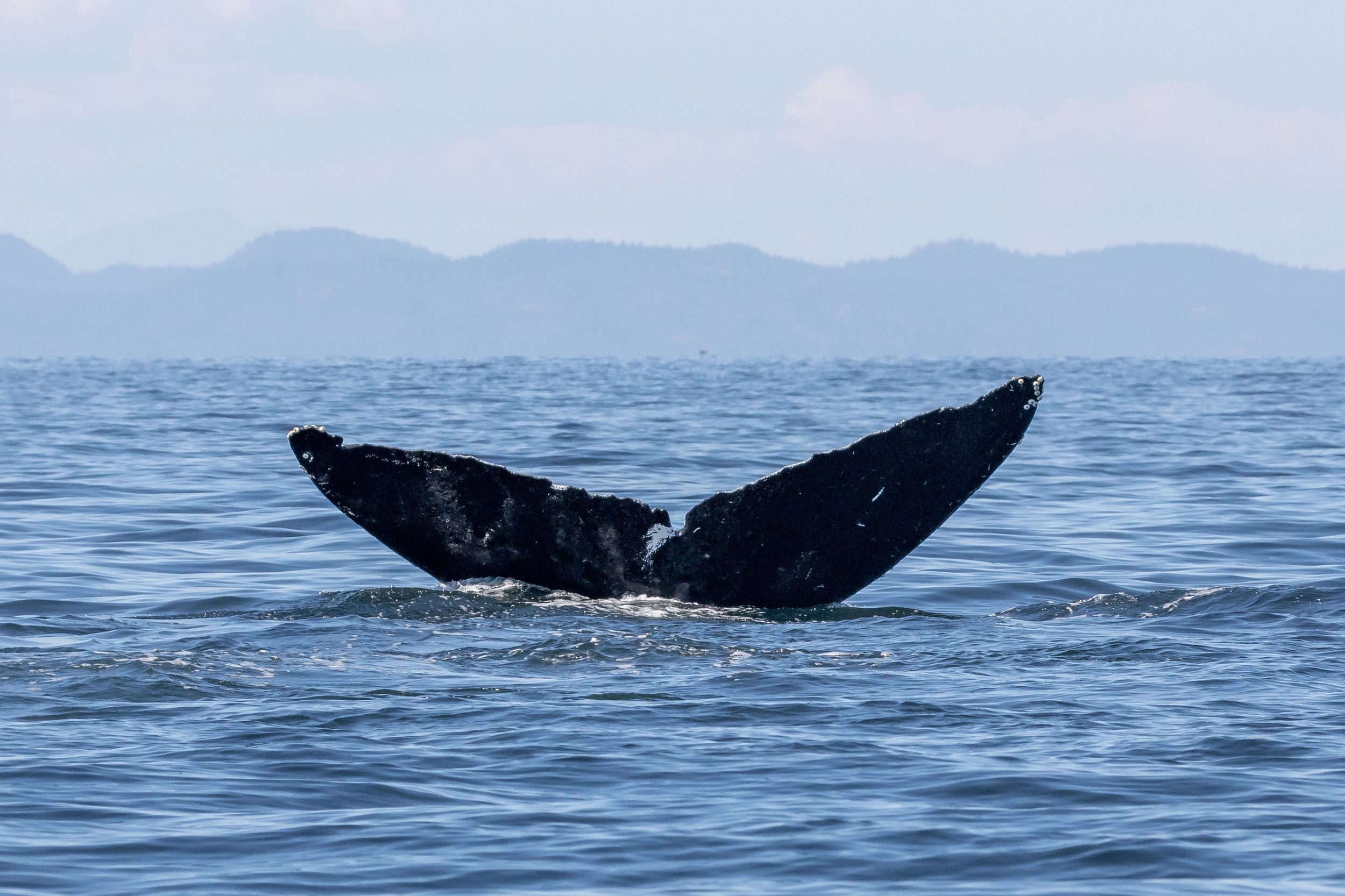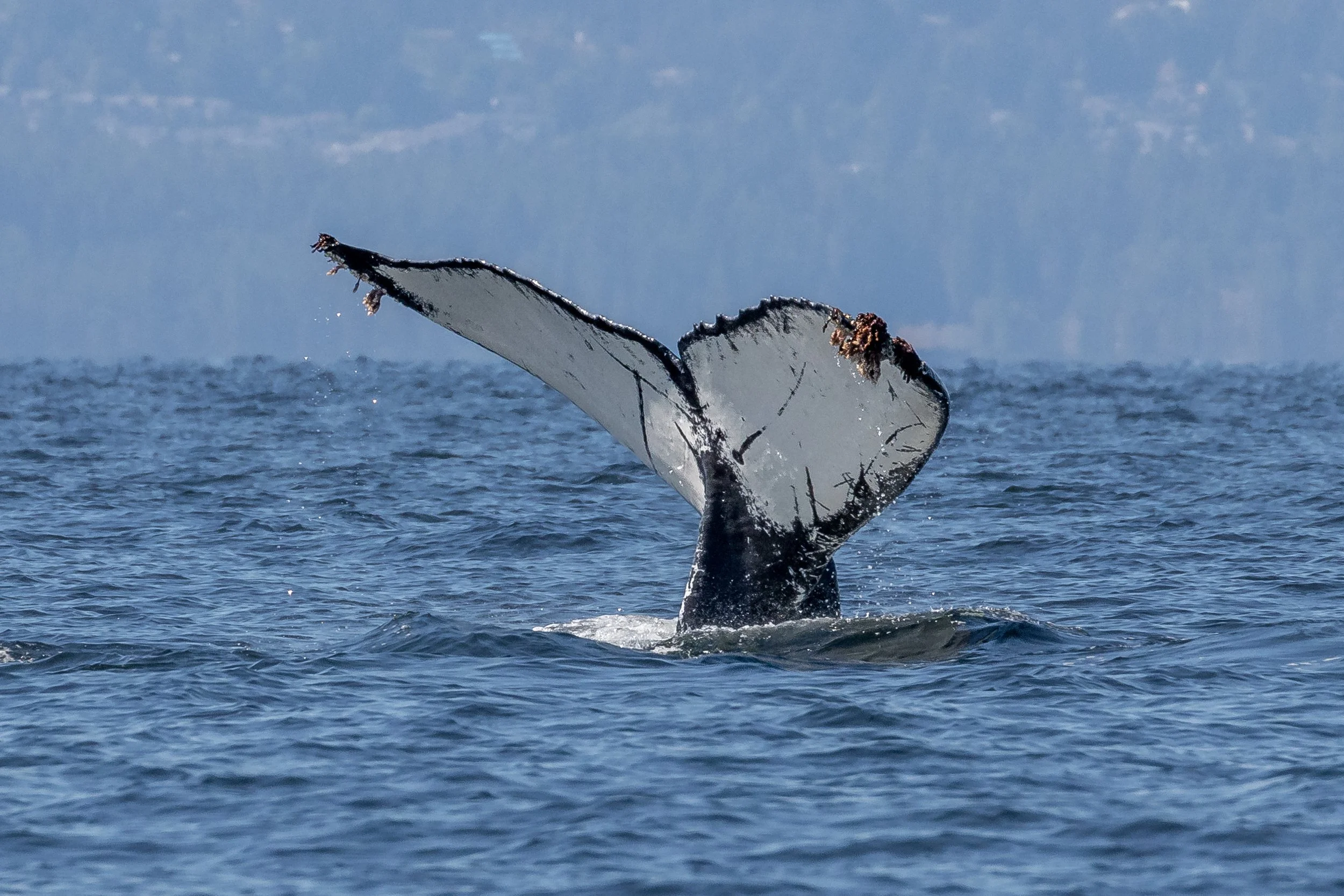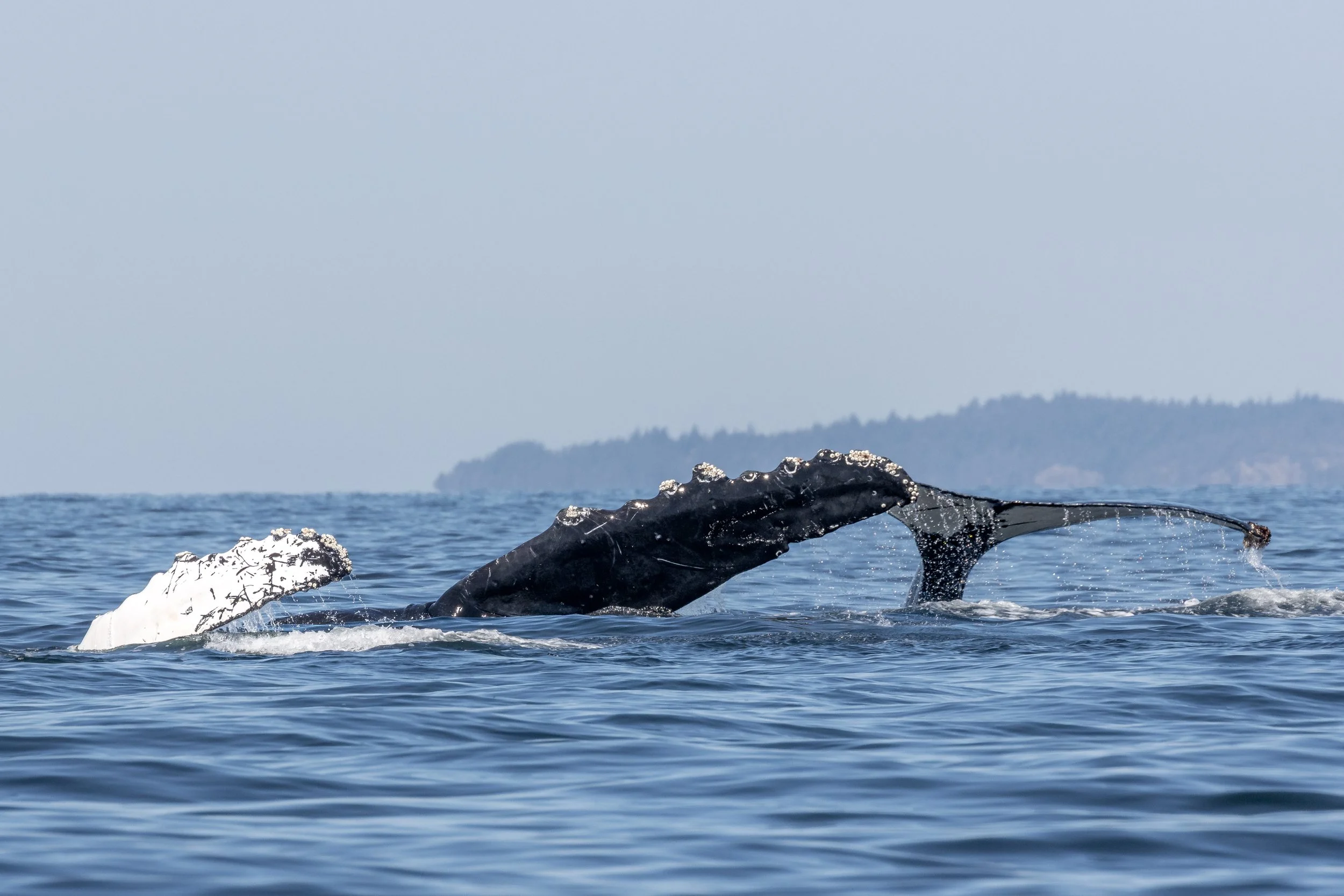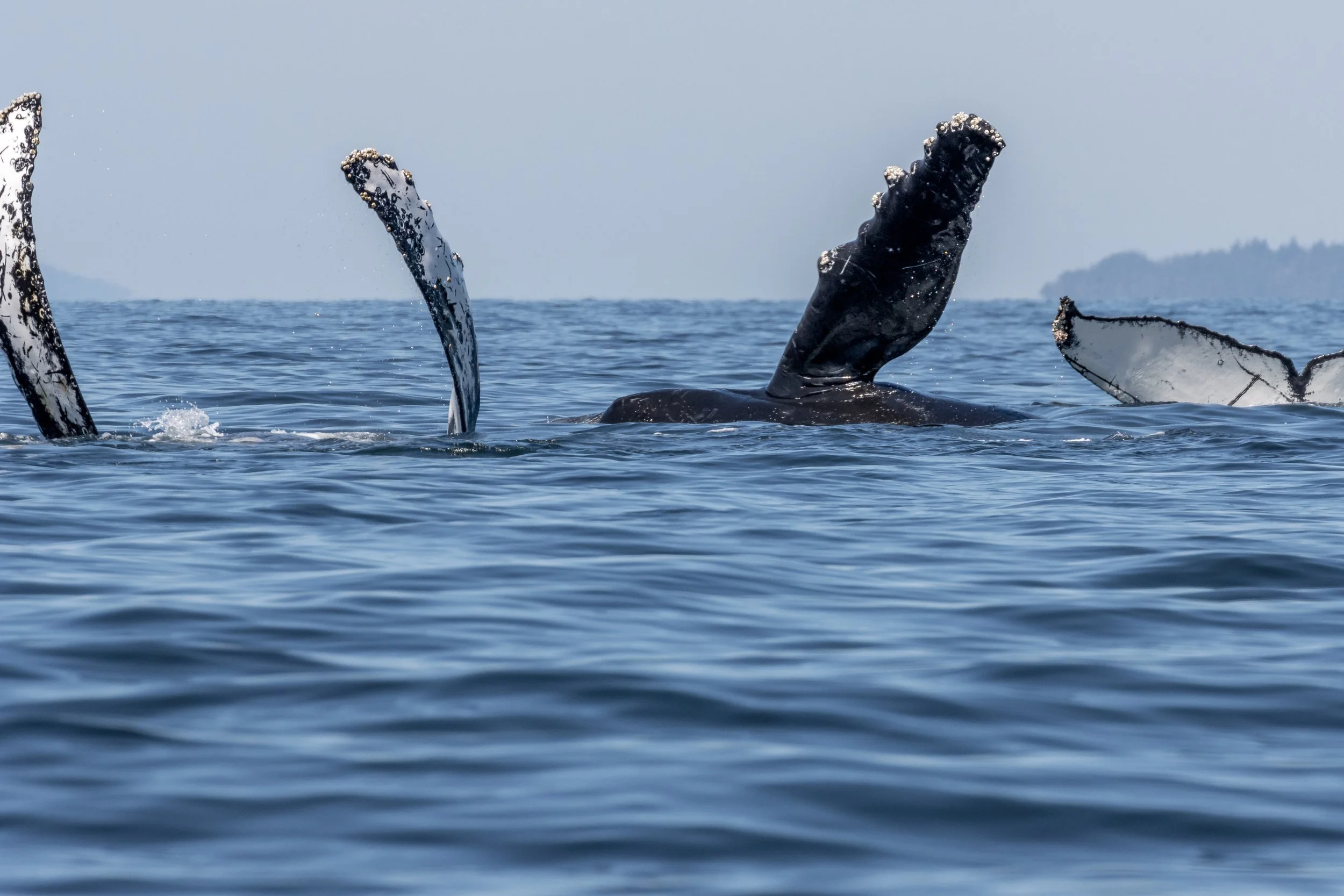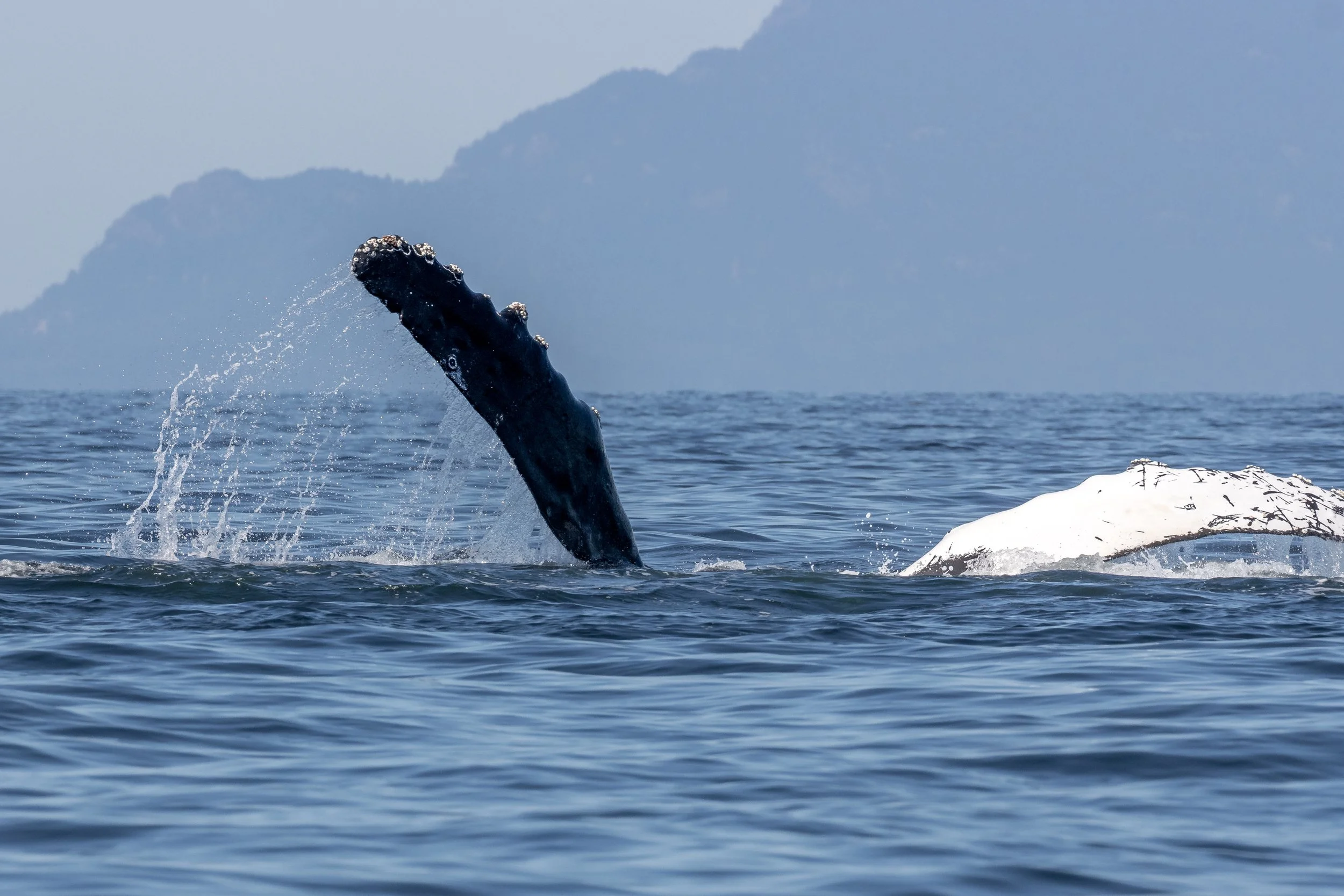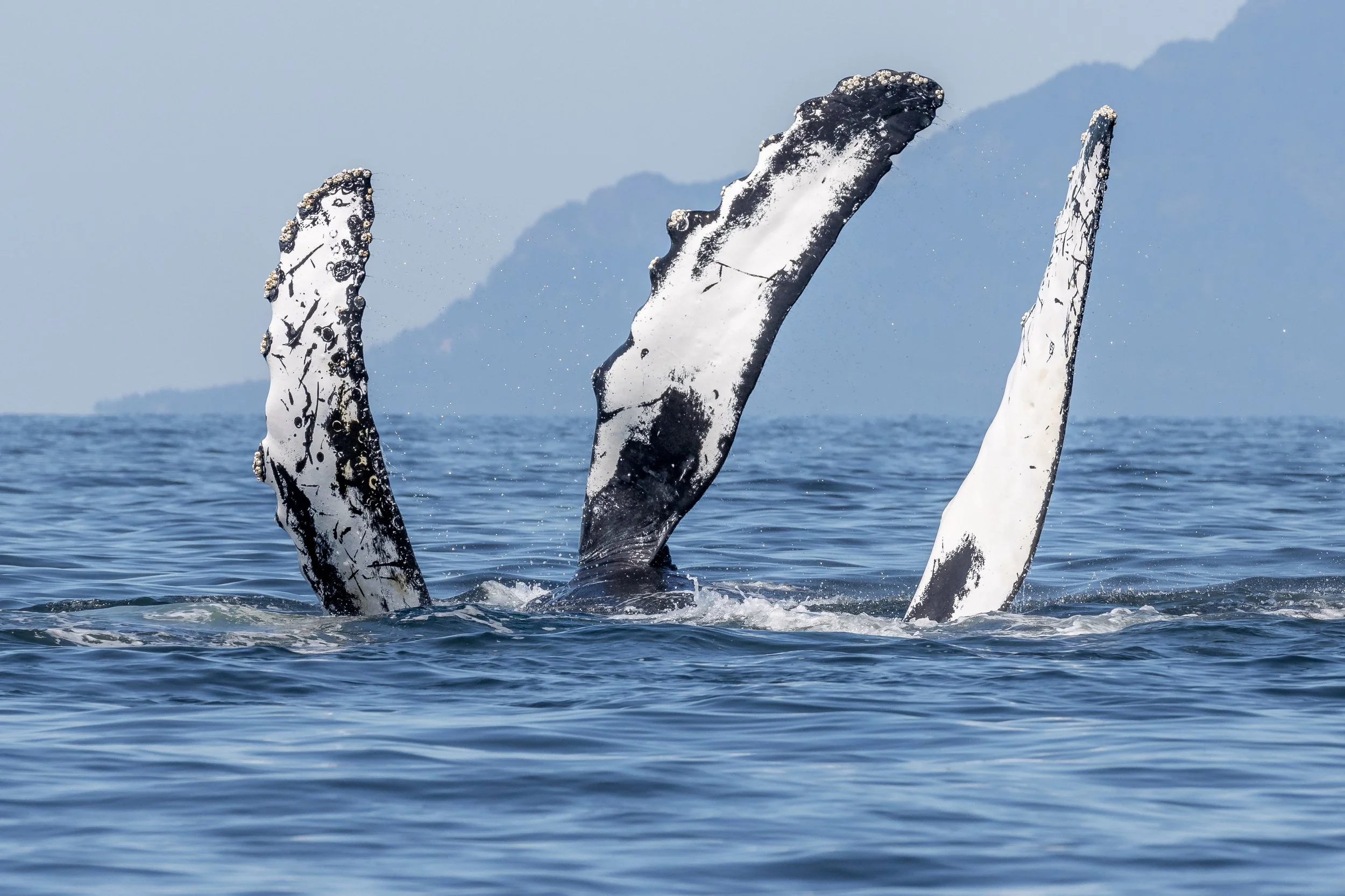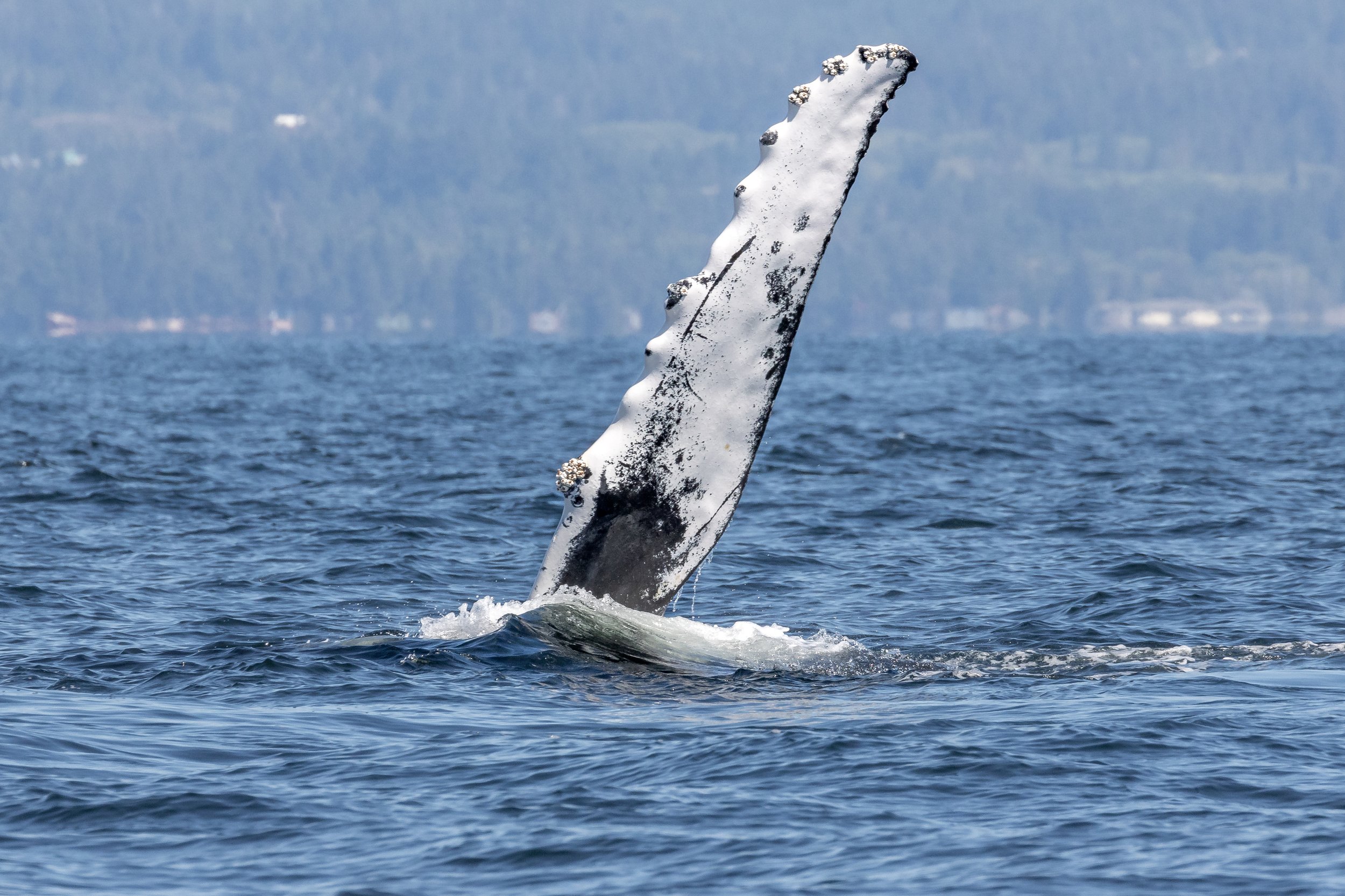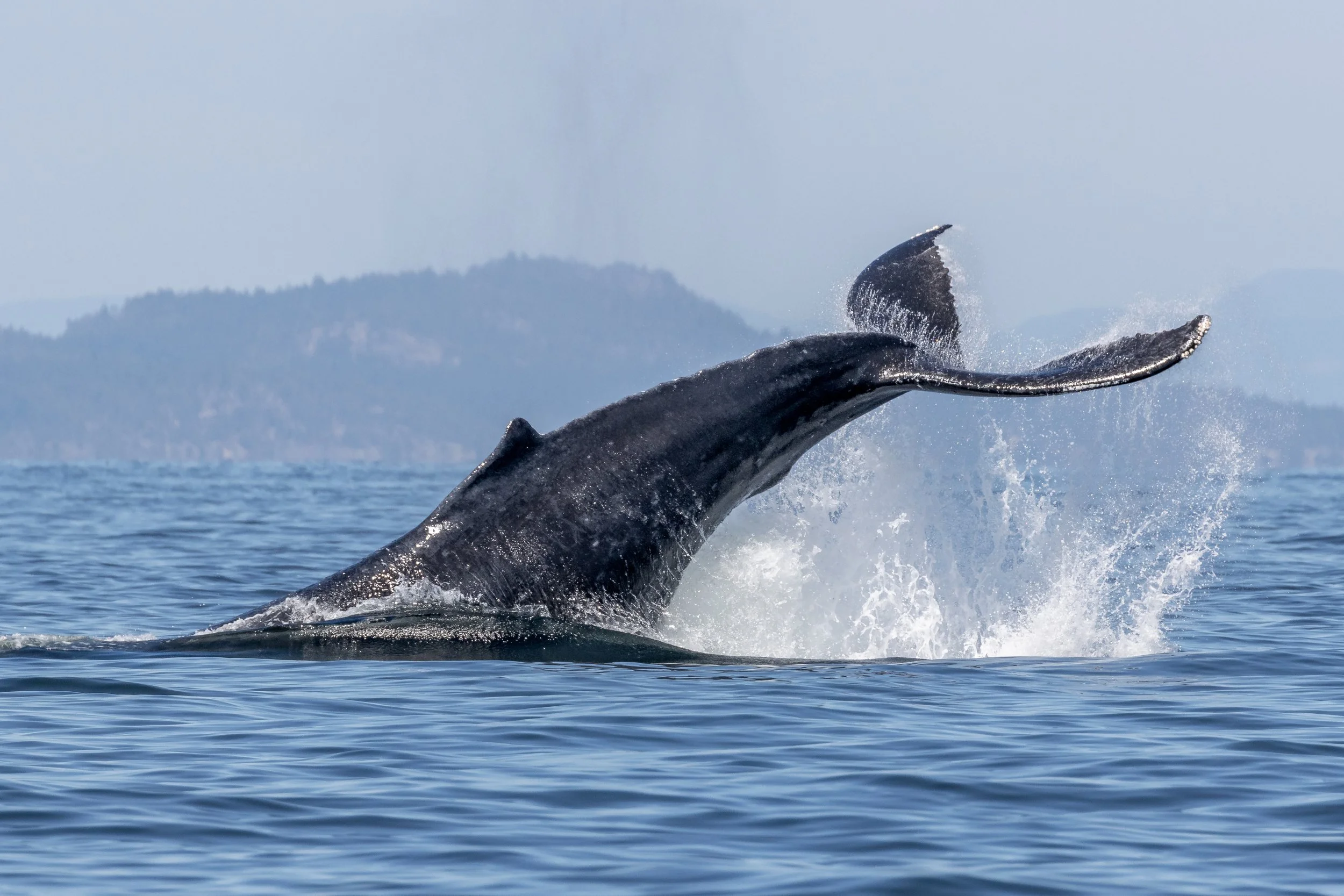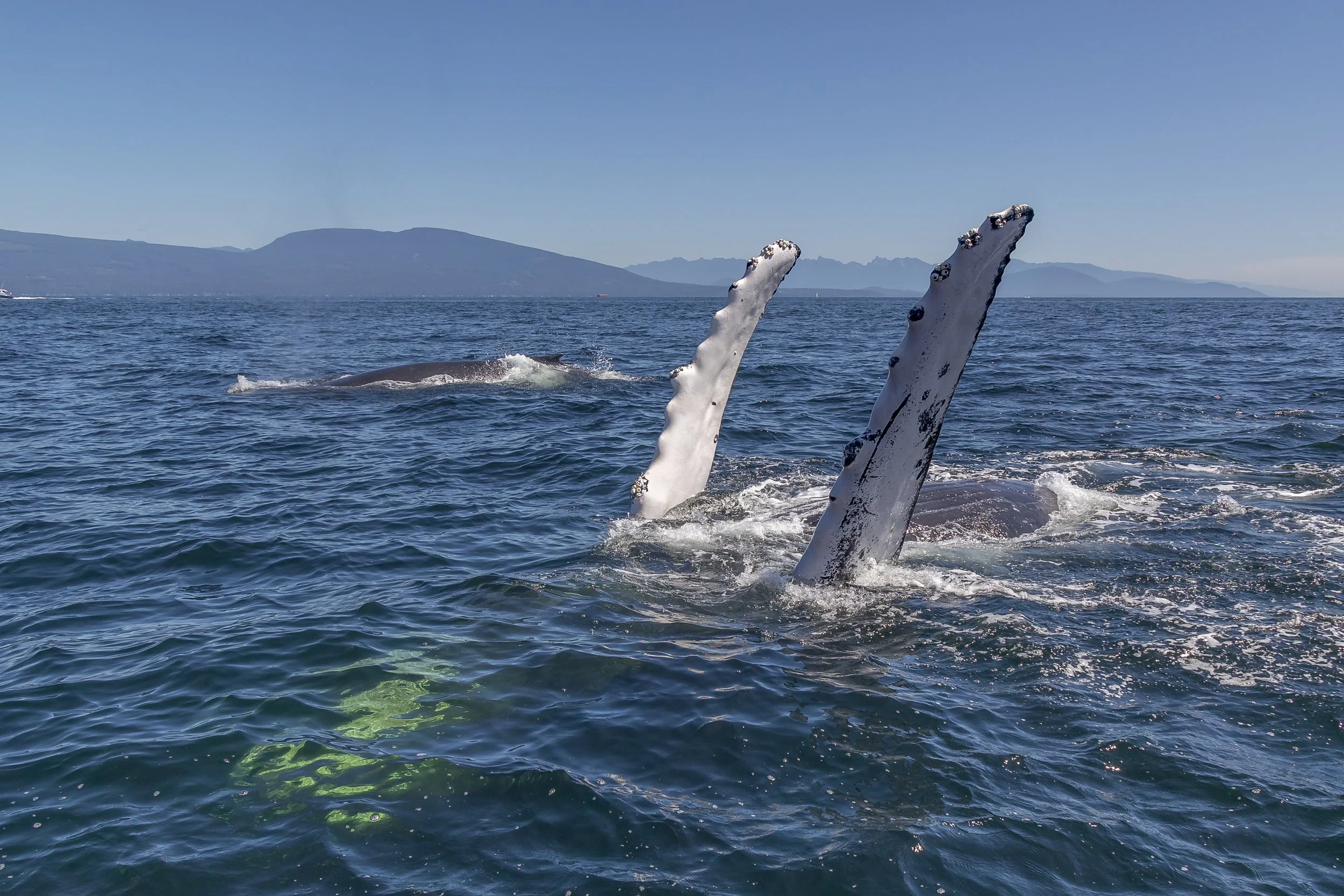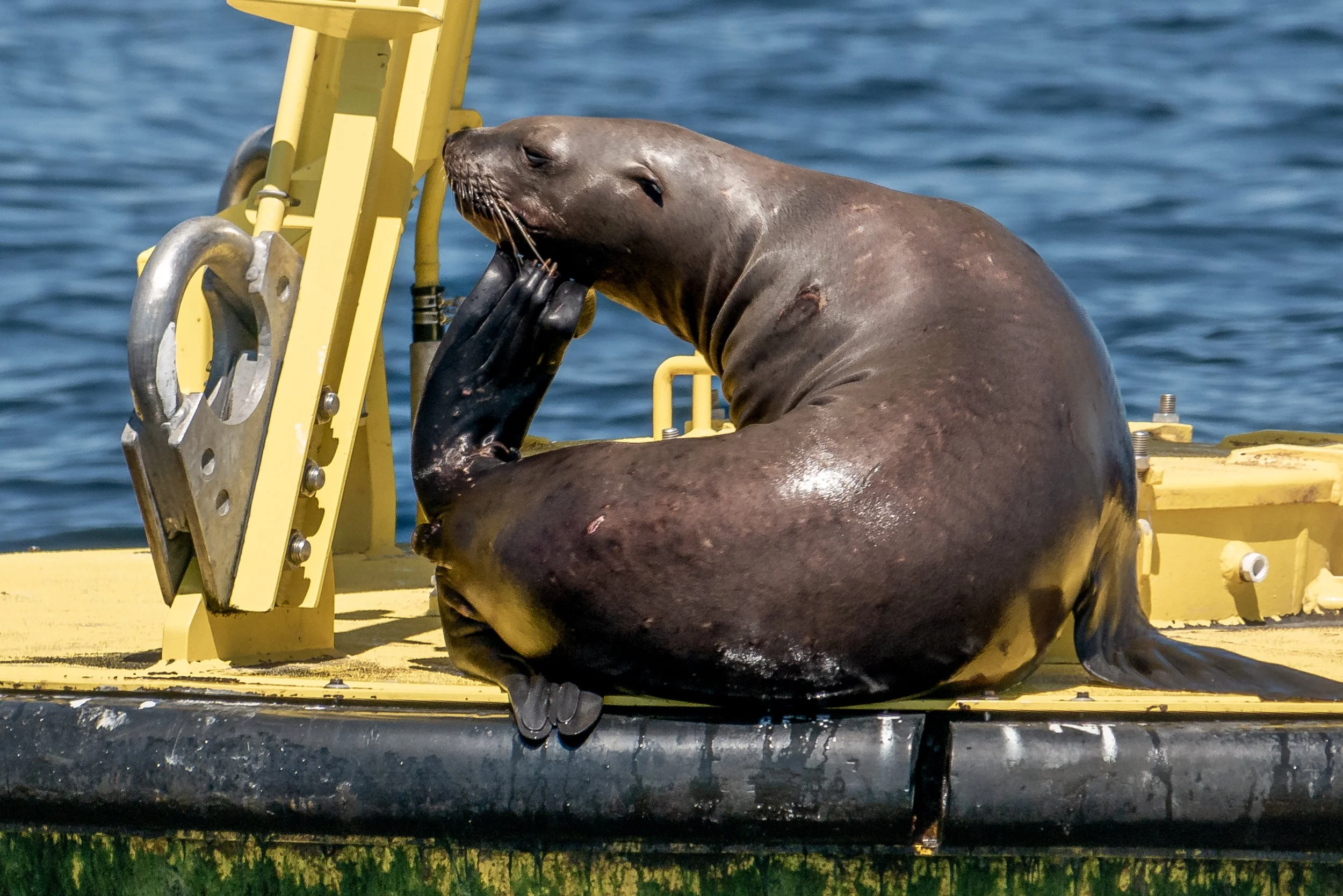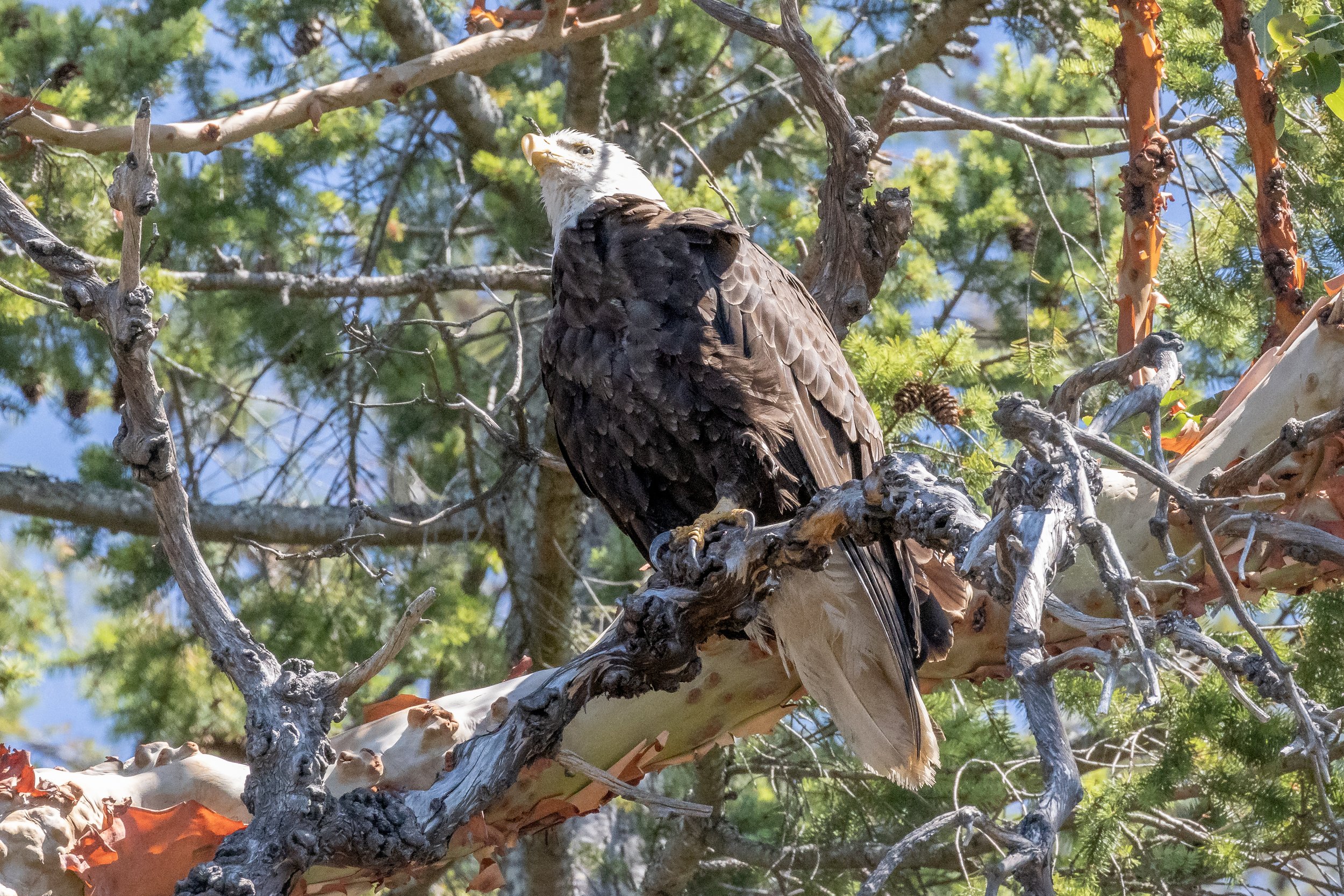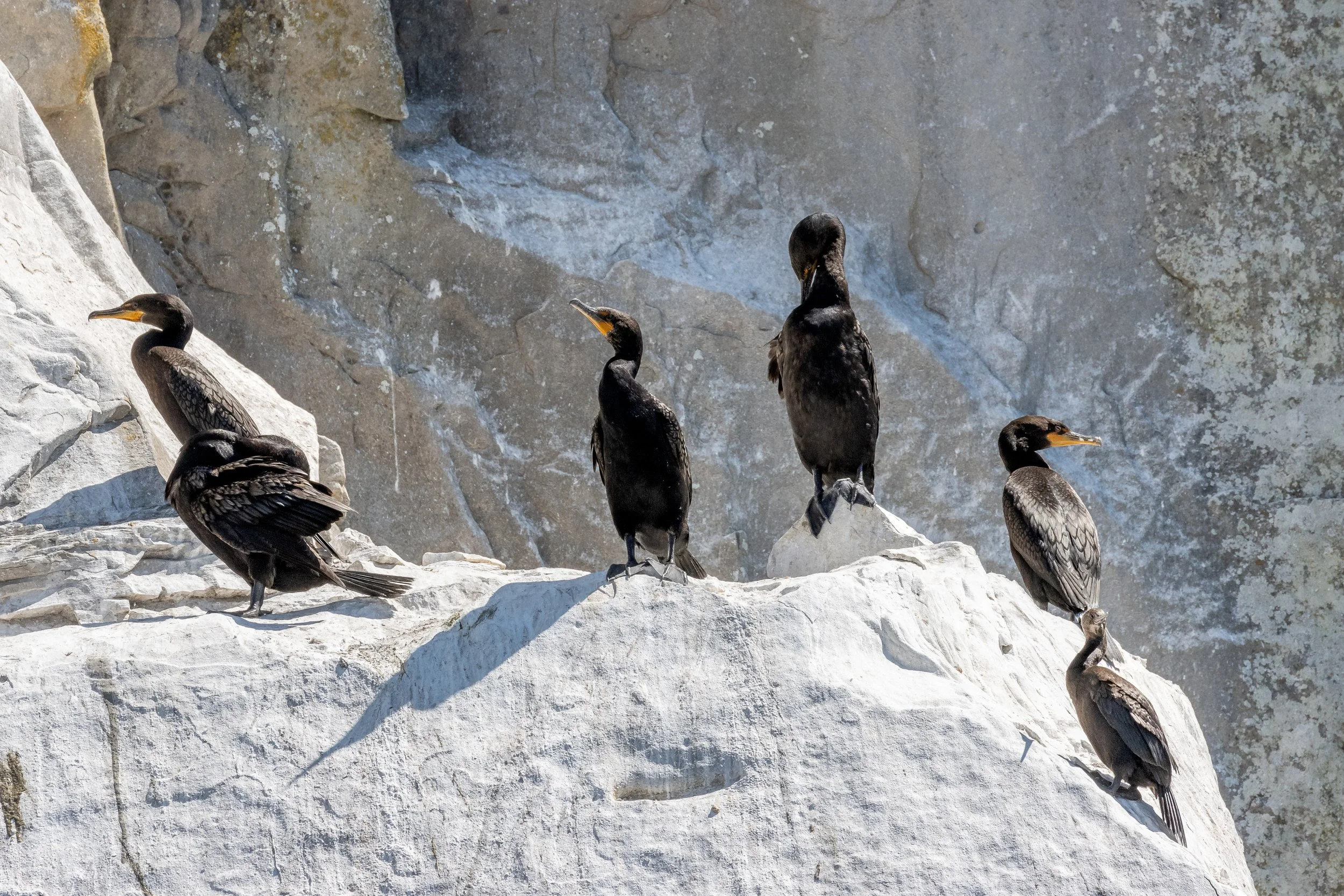August 4, 2023, 10:30 - Humpback Galore - Look at all those pecs!
Today was a Humpback kind of day! We saw not 1, not 2, but a total of 5 different individuals, including:
Geometry (BCZ0338), Niagara (BCY0057), Split Fluke (BCX1068), MMX0355, and HW-MN0510699!
Today we spotted our humpbacks in the Georgia Strait between Lantzville and Sechelt. Our humpbacks are migratory and feed here during the spring to fall months. Different whales will return back to their feeding grounds and leave back to their warm-water breeding grounds at different times. Some humpback whales even stayed until December of last year! While they’re here they will spend the majority of their time gulping down krill and small fish before migrating to Hawaii, Mexico or Baja once the temperature drops.
The humpbacks we saw today were extremely active! They were seen pec slapping - this means they were on their back or side underwater, and their pectoral fins were up in the air, slapping the water’s surface.
Humpbacks have the largest pectoral fins of all whale species. Their pectoral fins are so impressive (measuring up to 15 feet long) that part of their scientific name, Megaptera, directly translates to “giant wing”!
These massive “wings” help our Humpbacks in a variety of ways. The most obvious way is that they help them ‘steer’ or turn as they swim through the water. However, these pecs also have golf ball-sized bumps along their front edge that are called tubercles. Tubercles have a single hair follicle within each bump, known as vibrissae, which are attached to their nervous system and pick up on any vibrations or water movement within the water column.
Tubercles can also be found on the heads of humpbacks as well. These bumps are thought to help them detect temperature changes in the water which helps them with planning their yearly migration, as the water temperature becomes cooler. Another benefit they provide the humpback whales is that they act as a sensing mechanism allowing them to sense objects around them in the water column, such as boats or debris, or to help locate food.
A question that people often have is: why do humpbacks splash their pec fins or bodies on the water? There are a couple of theories, with one being that humpbacks are trying to remove parasites such as barnacles from their bodies. Another more likely theory is that they are trying to communicate with other whales in the area to let them know that they are nearby. Sound travels about 4 times faster underwater than they do in the air, so it’s known very quickly by a whale when there is another whale in the area if there is noisy breaching or pec-slapping involved!
Three of the whales we saw this morning are humpbacks we have seen on previous tours. Niagara is a known male and is about 23 years old- estimated to be born in 2000! Geometry is about 8 years old and it hasn’t yet been determined if they are a male or female. Split Fluke is a known female, who is 17 years old, and she has had three calves already: Valiant (2017 calf), Halfpipe (2019 calf) and a 2021 calf.
Today’s photos were taken by Marine Naturalists Vanessa Vereschahen, Des Poier, and Carmen Murphy.
A pair of Humpbacks diving. Photo by Vanessa Vereschahen.
The underside of HW-MN0510699’s fluke. Photo by Vanessa Vereschahen.
Split Fluke (BCX1068)’s distinct fluke. Photo by Vanessa Vereschahen.
MMX0355 - one of our new-to-us whales! Photo by Vanessa Vereschahen.
Niagara (BCY0057) with his signature ‘waterfall’ marking. Photo by Vanessa Vereschahen.
Geometry (BCZ0338)’s brilliant white fluke. Photo by Vanessa Vereschahen.
A bit of a different view - looking up the back of a humpback whale. Photo by Vanessa Vereschahen.
Now that’s a lot of whales! Photo by Vanessa Vereschahen.
How many whales can you spot in this photo? Photo by Vanessa Vereschahen.
Pecs in the air like you just don’t care! Photo by Vanessa Vereschahen.
A triple pectoral wave! Photo by Vanessa Vereschahen.
Each pectoral fin has unique scratches and markings on it. Photo by Vanessa Vereschahen.
The circles on this pec are likely from barnacles being pulled off the skin. Photo by Vanessa Vereschahen.
A big tail lob! Photo by Vanessa Vereschahen.
You can see the bright white on this individual’s pec fins under the water! Photo by Carmen Murphy.
What a beautiful backstroke by HW-MN0510699! Photo by Carmen Murphy.
An itchy sea lion on one of our ODAS buoys. Photo by Des Poier.
Snoozing seals looking around. Photo by Des Poier.
A mature Bald eagle in an Arbutus tree. Photo by Vanessa Vereschahen.
Juvenile Bald eagles, as seen here, have a gorgeous brown and white plumage. Photo by Vanessa Vereschahen.
A juvenile Bald eagle in flight. Photo by Vanessa Vereschahen.
A juvenile Cormorant swimming along. Photo by Vanessa Vereschahen.
A mixture of mature and juvenile Double-crested cormorants. Photo by Vanessa Vereschahen.





